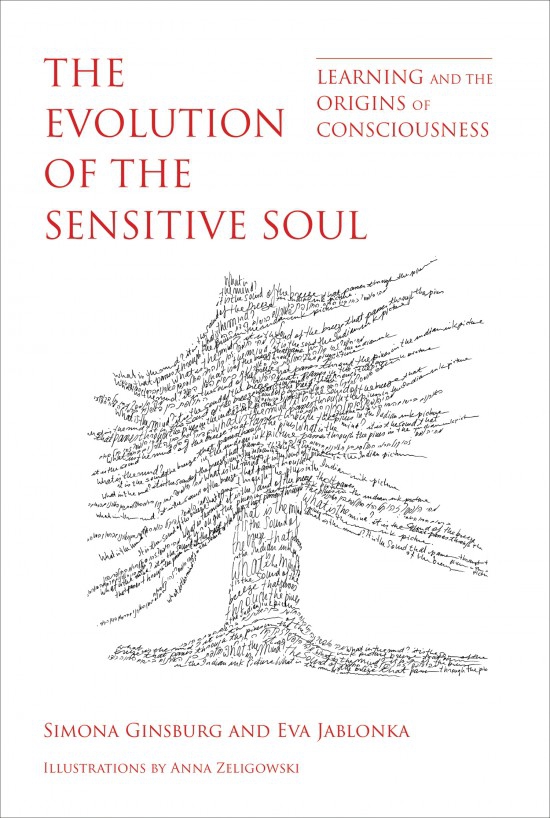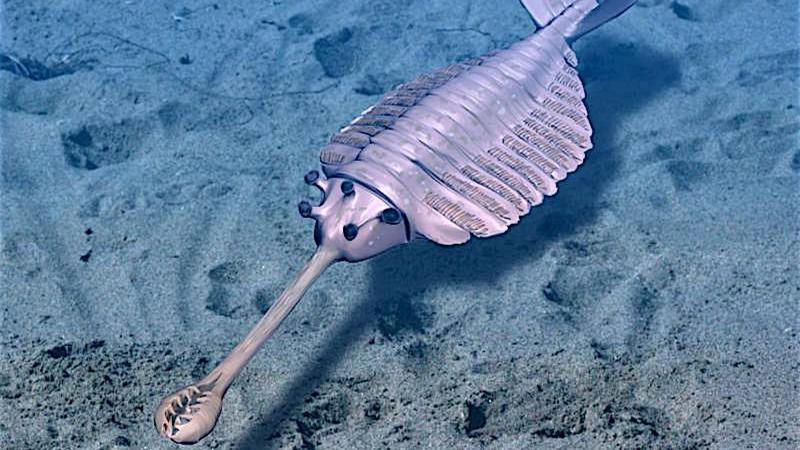 A new book from Simona Ginsburg and Eva Jablonka addresses this very issue. In a complex and challenging book, the authors discuss the origins of consciousness from an evolutionary perspective. They postulate that capability to learn was the driving force in the evolutionary transition to basic consciousness and it occurred during the Cambrian.
A new book from Simona Ginsburg and Eva Jablonka addresses this very issue. In a complex and challenging book, the authors discuss the origins of consciousness from an evolutionary perspective. They postulate that capability to learn was the driving force in the evolutionary transition to basic consciousness and it occurred during the Cambrian.
This thought-provoking book has provided me with a new way to imagine the dynamics of the Cambrian Explosion and its impacts on life on this planet today. A tour-de-force on consciousness study, recommended.
During the Cambrian, at the end of a protracted ice age when most of the earth was covered in ice sheets, the most remarkable period in the history of life on earth began. Termed the Cambrian Explosion or Cambrian radiation it commended around 541 million years ago when most major animal phyla appeared in the fossil record and some which are no longer represented. What has most fascinated geologists and evolutionary biologists is that Cambrian Explosion occurred in over a period of a mere 13 or million years.

There is evidence of life on earth as far back as 3.6 billion years, but prior to the events commencing in 541 MA most organisms were simple, composed of individual cells and occasionally organized into colonies. They were soft-bodied, and their poor preservation has been a major obstacle to understanding the evolution of plant and animals on earth prior to the Cambrian.

The authors ask the question “What marked the evolutionary transition from organisms that lacked consciousness to those with consciousness—to minimal subjective experiencing, or, as Aristotle described it, “the sensitive soul”?
Simona Ginsburg and Eva Jablonka postulate that learning was the driving force in the transition to basic consciousness. Using a methodology similar to that used by scientists when they identified the transition from non-life to life, Ginsburg and Jablonka suggest a set of criteria, identify a marker for the transition to minimal consciousness, and explore the far-reaching biological, psychological, and philosophical implications.
The book is divided into two parts. Chapters 1 through 5 provides an historical, biological and conceptual foundation for a discussion of consciousness. Their point of departure for their discussion is Aristotle’s “soul” the dynamics of living beings, and its different manifestation in different types of organisms; the “nutritive and reproductive soul” which involved self-maintenance and reproduction and is present in all living beings; the “sensitive soul” which is equated with the living organization of sentiment, subjectively experiencing beings; and the “rational soul” which is special to reasoning humans. This section offers and outstanding summary of the state of knowledge and research on consciousness.
Chapters 6 through 10 develop their evolutionary arguments. They propose that the evolutionary marker of basic or minimal consciousness is a complex form of associative learning, which they term “unlimited associative learning” (UAL). UAL enables an organism to ascribe motivational value to a novel, compound, non-reflex-inducing stimulus or action, and use it as the basis for future learning. Associative learning, Ginsburg and Jablonka argue, drove the Cambrian explosion and its massive diversification of organisms. Finally, Ginsburg and Jablonka propose symbolic language as a similar type of marker for the evolutionary transition to human rationality—to Aristotle’s “rational soul.”
This book is a tour-de-force of the study of consciousness, a notoriously difficult topic, for it requires the study of the conscious by the conscious. The question of consciousness and its origins in the Cambrian Explosion has allowed me to think about our origins in a different manner.
I suspect that there were definite advantages for early Cambrian life to have been sensitive to light. This would have allowed life to find the most productive niche with the greatest resources. This likely rather quickly became a biological arms-race with better “sight” producing a competitive reproductive advantage. Predation would have simply accelerated the evolution of sight and that requires increased processing capability and a larger collection of neurons. With predation came awareness almost as a necessity to find a meal and with increased mobility, reproduction. Sight then would seem to be the most significant evolutionary event which drove the early stages of the Cambrian Explosion however subsequently, increased processing capability over time would have played a pivotal role in the evolution of predation and earliest awareness.